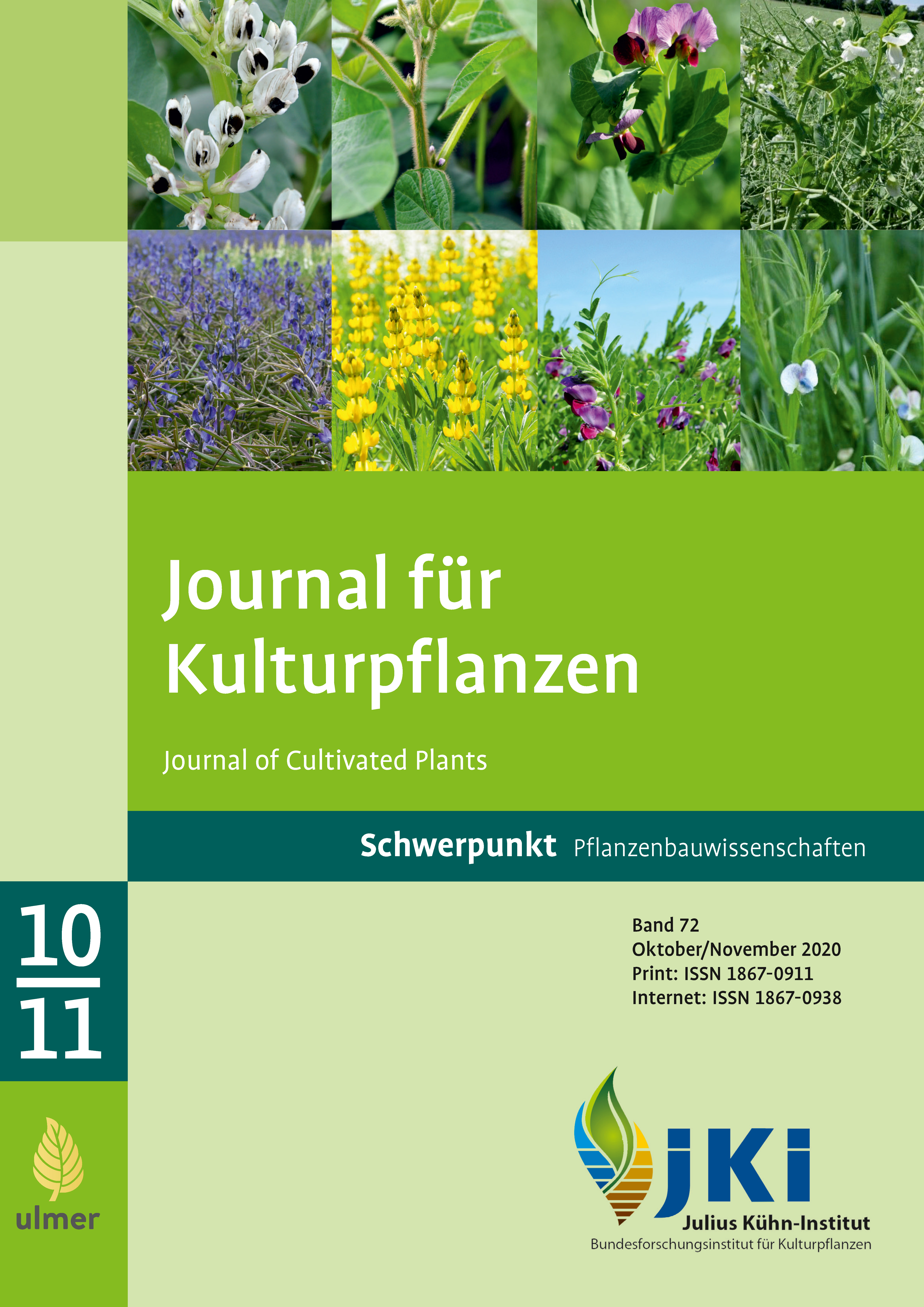Influence of senescence on the differentiation of the ingredients of grain legume straw as a basis for the calculation of theoretical biogas potentials
DOI:
https://doi.org/10.5073/JfK.2020.10-11.02Keywords:
Vicia faba, Pisum sativum, straw, senescence, ingredients, biogas potential, grain legumes, co-productsAbstract
The use of cereal grains or maize as substrate for the biogas plant will in future be gradually limited to a maximum of 44 % by the Renewable Energy Sources Act (EEG, 2017, § 39 h). In addition, the fixed payment will no longer apply to most existing plants and new plants, which represents a further challenge with regard to the economic efficiency of substrates. Co-products from agriculture represent a so far largely unused, cost-effective alternative. Up to now, the main motivation for growing grain legumes has been the preceding crop value of the crop (Zerhusen-Blecher et al., 2016). The use of this co-product in biogas plants could provide an additional cultivation inducement and improve the profitability of grain legumes. However, for a successful use of straw-like and thus lignocellulose-rich substrates in biogas plants it is necessary to generate data on the biogas potential. In order to test the effect of increasing senescence on straw ingredients in grain legumes, three genotypes each of field peas Pisum sativum L. and field beans Vicia faba L. were harvested at different dates and conserved as straw or straw silage in two years, at two locations with four repetitions. Harvesting dates should cover the period from beginning of threshing maturity (EC 84–89), to threshing maturity (EC 89–94) and later threshing maturity (EC 96–98) until complete dead maturity (EC 99). The examination of the ingredients included the crude protein, hemicellulose, cellulose and lignin content according to van Soest. Based on these ingredients, theoretical biogas potentials were calculated. The investigations showed a decrease of the crude protein content with increasing senescence in both species. For the other ingredients, there were differences between the species and preservation methods. The hemicellulose content degraded by ensiling and converted to organic acids was lower in the silages than in the straw, despite the same starting material. Overall, an increase in the structural substances with progressive senescence was observed. The theoretical biogas potentials increased with progressive senescence or remained unaffected by it. Biogas yields of about 530 l/kg DM and methane gas yields of about 265 l/kg DM were calculated, which is about 75 % of the methane gas yield of silage maize (Karpenstein-Machan, 2005). The differences in the gas yields of field bean varieties were small, therefore straw yield as a parameter for use as biogas substrate is more important. For field beans, the varieties Fuego and Tiffany are recommended, since the straw yields were significantly higher than those of the variety Taifun. For peas, the variety Respect had a higher straw yield and slightly higher gas yields than the other varieties, but this variety could not be completely tested, which is why no variety recommendation is given.
Downloads
Published
Issue
Section
License
The content of the journal is licensed under the Creative Commons Attribution 4.0 License. Any user is free to share and adapt (remix, transform, build upon) the content as long as the original publication is attributed (authors, title, year, journal, issue, pages).
The copyright of the published work remains with the authors. The authors grant the Journal of Cultivated Plants, the Julius Kühn-Institut and the OpenAgrar repository the non-exclusive right to distribute and exploit the work.







